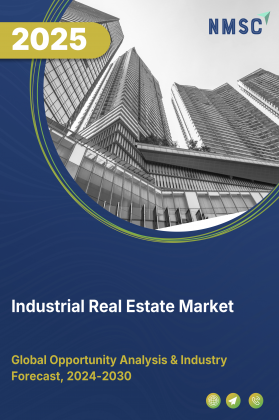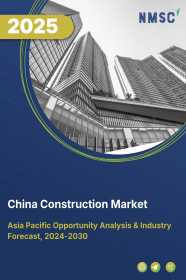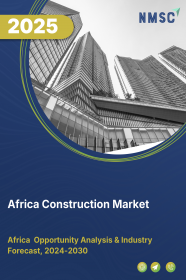
Africa Construction Market by Type (Renovation, and New Construction), by Sector (Real Estate and Others), by Construction Method (Traditional Construction, Prefabricated/Modular Construction, 3D Printed Construction, Green/Sustainable Construction), and by Type of Contractor (Large Contractor, Medium Contractor and Small Contractor) – Regional Industry Trends and Forecast, 2025–2030
Industry: Construction & Manufacturing | Publish Date: 21-Jun-2025 | No of Pages: 100 | No. of Tables: 146 | No. of Figures: 91 | Format: PDF | Report Code : CM2227
Industry Overview
The Africa Construction Market size was valued at USD 219.66 billion in 2024 and is predicted to reach USD 232.08 billion by the end of 2025. The industry is predicted to reach USD 239.99 billion by the end of 2030, at a CAGR of 0.7% from 2025 to 2030.
The growing digital transformation in the African construction market, along with the increasing adoption of Building Information Modeling (BIM), is driving significant growth in the sector. BIM empowers stakeholders to digitally design, manage, and simulate building infrastructure, improving project accuracy, reducing errors, and enhancing team coordination. This technology has become crucial for boosting productivity, minimizing delays, and optimizing resource usage in construction projects.
A notable example of this shift is the launch of Allplan 2024 by ALLPLAN in April 2024, which enhances BIM capabilities and cloud-based workflows, further accelerating the transition to digital project delivery. Additionally, the convergence of BIM with emerging technologies such as artificial intelligence (AI), the Internet of Things (IoT), and cloud computing facilitates real-time data sharing, predictive maintenance, and enhanced facility management. These developments underscore the ongoing evolution of the construction industry, positioning digitalization as a key driver of future growth.
Surge in Construction Projects Driving Growth in the Region
The African construction industry is witnessing a surge in infrastructure projects across key economies such as Nigeria, Kenya, Ghana, and Egypt, acting as a catalyst for broader market expansion. In Nigeria, for example, rising public and private sector investments are fueling construction activity. According to the Global Infrastructure Hub, infrastructure investments in Nigeria reached USD 23 billion in 2023. The energy sector attracted the highest share at USD 7.2 billion, followed by road transport at USD 5.9 billion, reflecting the country’s strategic focus on improving energy access and transportation networks.
This momentum is further supported by Africa’s vast renewable energy potential, which accounts for nearly 44.8% of the global renewable energy capacity opportunity. The transition to clean energy is not only stimulating investments in power infrastructure but also contributing to a more sustainable construction ecosystem across the continent.
Large-Scale Engineering Projects Boosting Regional Construction Activity
Kenya is emerging as a regional infrastructure leader through large-scale engineering and megaprojects that are transforming the country’s construction landscape. Key initiatives include the Lamu Port-South Sudan-Ethiopia-Transport (LAPSSET) Corridor, Thwake Dam, Karimenu and Thiba Dams, the Standard Gauge Railway (SGR) between Mombasa and Malaba, the Nairobi-Mombasa Expressway, and the development of Konza Technology City and Tatu City. These transformative projects are playing a central role in bolstering Kenya’s construction industry while improving regional integration and economic connectivity.
The United Nations Environment Programme (UNEP) projects the African infrastructure market to grow at a compound annual growth rate (CAGR) of 6.4% from 2019 to 2024, reaching an estimated market value of USD 5.4 billion by 2024. Countries such as Egypt, Nigeria, and South Africa contribute around half of the continent’s total construction output, while Central African nations remain underrepresented, contributing only 2%.
Overall, the construction and infrastructure sectors are expected to be key contributors to Africa’s economic growth, with the continent projected to grow by 2.8% in 2022 and 2.7% in 2023, according to regional economic forecasts.
Regulatory Complexities Hindering Market Growth
Regulatory challenges continue to be a major impediment to the growth of the construction industry across Africa. Infrastructure and construction projects often encounter delays due to the multilayered and fragmented regulatory frameworks present across local, regional, and national jurisdictions. These regulatory requirements typically include zoning laws, environmental impact assessments, building code compliance, safety standards, and land acquisition procedures.
In many African countries, lengthy permit approval processes, bureaucratic red tape, and inconsistent enforcement of regulations significantly delay project execution and increase operational costs. Additionally, frequent policy shifts, unclear guidelines, and lack of coordination between government departments further complicate the regulatory landscape. These obstacles not only hamper project delivery but also discourage foreign direct investment and reduce investor confidence in long-term infrastructure development.
Integration of Digitalization and BIM Presents Lucrative Opportunity for Market Expansion
The growing digital transformation of Africa’s construction industry presents a significant opportunity for market expansion. Technologies such as Building Information Modeling (BIM) are gaining traction across the continent as tools to improve project planning, design, execution, and asset management. BIM allows stakeholders to create and manage intelligent 3D models that enhance collaboration, reduce design conflicts, and minimize construction errors, ultimately leading to faster project completion and lower costs.
A notable development in this space is the Africa National Building Information Management (BIM) Program, launched by the National Institute of Building Sciences (NIBS) in September 2022. This initiative aims to establish standardized BIM practices across African nations and promote regional knowledge sharing and capacity building.
In addition to BIM, the broader adoption of cloud-based project management tools, drones for site surveying, AI-driven analytics, and IoT-enabled smart construction is helping companies improve transparency, resource utilization, and safety on job sites. As more governments and private developers embrace these digital innovations, Africa’s construction sector is well-positioned to leapfrog traditional limitations and accelerate sustainable development.
Competitive Landscape
The key players operating in the Africa construction industry include China Communications Construction Company (CCCC), China Railway Construction Corporation (CRCC), Vinci Construction, Bouygues Construction, Concor Construction (Pty) Ltd, Mota-Engil Africa, Aveng Grinaker-LTA, Murray And Roberts Construction, WK Construction, Hillary Construction Group, Fikile Construction, Tau Pele Construction, B. Stabilini and Company Limited, Tri-Star Construction, and African Land.
Africa Construction Market Key Segments
By Type
-
Renovation
-
New Construction
By Sector
-
Real Estate
-
Residential
-
Affordable
-
Luxury
-
-
Commercial
-
Retail Buildings
-
Office Buildings
-
Hospitality
-
Healthcare Facilities
-
Educational Institutes
-
Entertainment Ventures
-
-
- Infrastructure
-
Transportation
-
Airport
-
Port
-
Rail
-
Road
-
-
Water and Wastewater
-
Energy
-
Telecommunication
-
- Industrial
-
Manufacturing Plant
-
Warehouses
-
Power Plants
-
Oil Refineries
-
Chemical Plants
-
By Construction Method
-
Traditional Construction
-
Prefabricated/Modular Construction
-
3D Printed Construction
-
Green/Sustainable Construction
By Type of Contractor
-
Large Contractor
-
Medium Contractor
-
Small Contractor
By Country
-
South Africa
-
Nigeria
-
Kenya
-
Egypt
-
Morocco
-
Ghana
-
Other Countries
Key Players
-
China Communications Construction Company (CCCC)
-
China Railway Construction Corporation (CRCC)
-
Vinci Construction
-
Bouygues Construction
-
Concor Construction (Pty) Ltd
-
Mota-Engil Africa
-
Aveng Grinaker-LTA
-
Murray And Roberts Construction
-
WK Construction
-
Hillary Construction Group
-
Fikile Construction
-
Tau Pele Construction
-
B. Stabilini and Company Limited
-
Tri-Star Construction
-
African Land
REPORT SCOPE AND SEGMENTATION:
|
Parameters |
Details |
|
Market Size in 2024 |
USD 219.66 Billion |
|
Revenue Forecast in 2030 |
USD 239.99 Billion |
|
Growth Rate |
CAGR of 0.7% from 2025 to 2030 |
|
Analysis Period |
2024–2030 |
|
Base Year Considered |
2024 |
|
Forecast Period |
2025–2030 |
|
Market Size Estimation |
Billion (USD) |
|
Growth Factors |
|
|
Companies Profiled |
15 |
|
Market Share |
Available for 10 companies |
|
Customization Scope |
Free customization (equivalent to up to 80 working hours of analysts) after purchase. Addition or alteration to country, regional, and segment scope. |
|
Pricing and Purchase Options |
Avail customized purchase options to meet your exact research needs. |







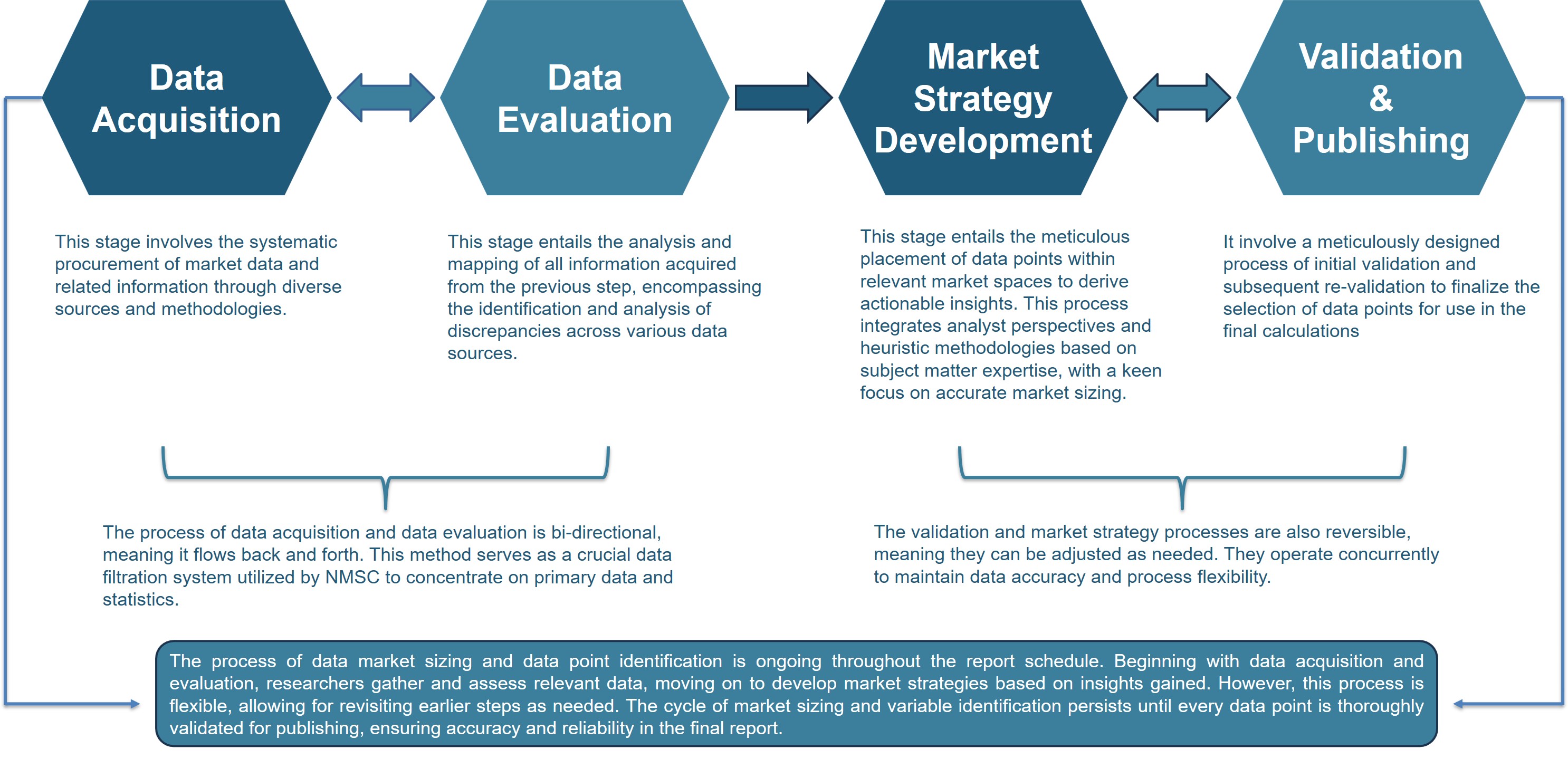




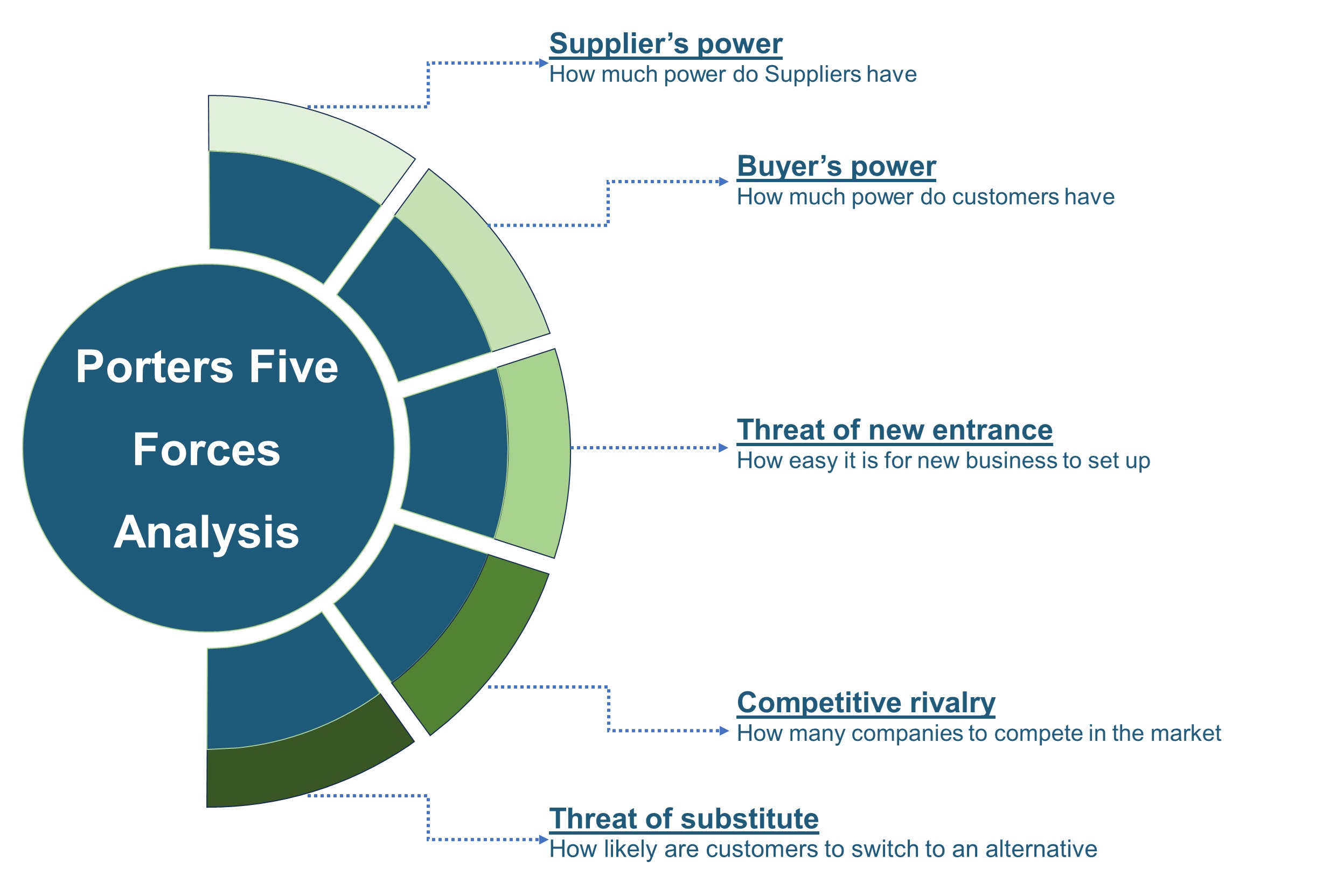







 Speak to Our Analyst
Speak to Our Analyst



